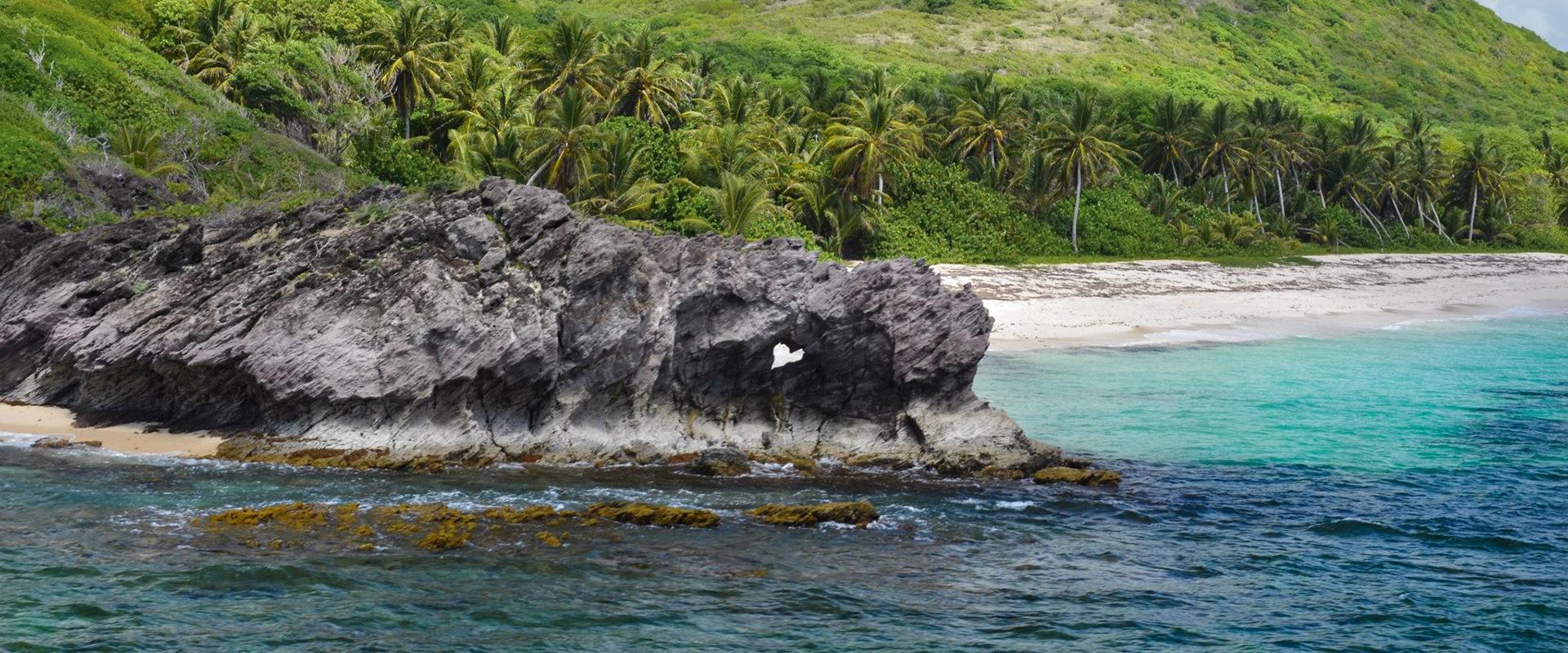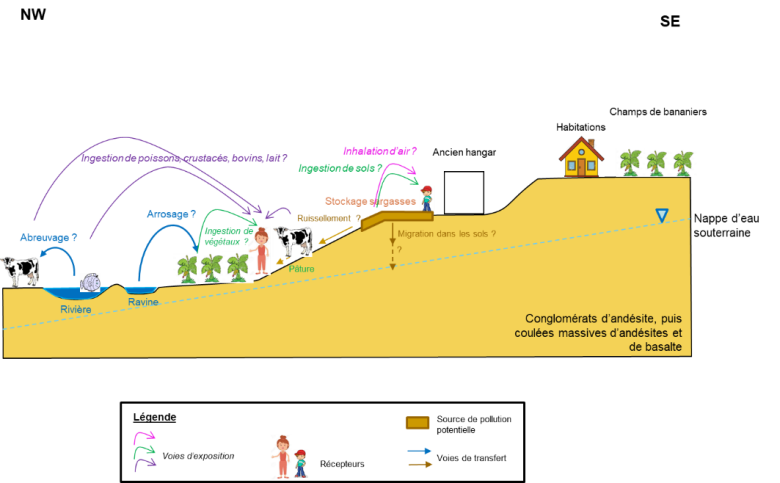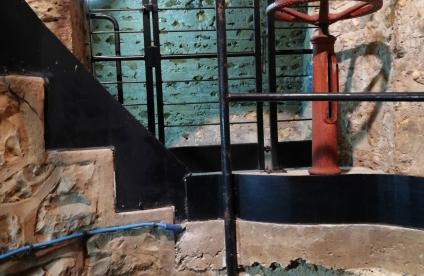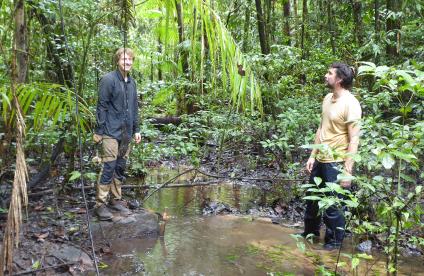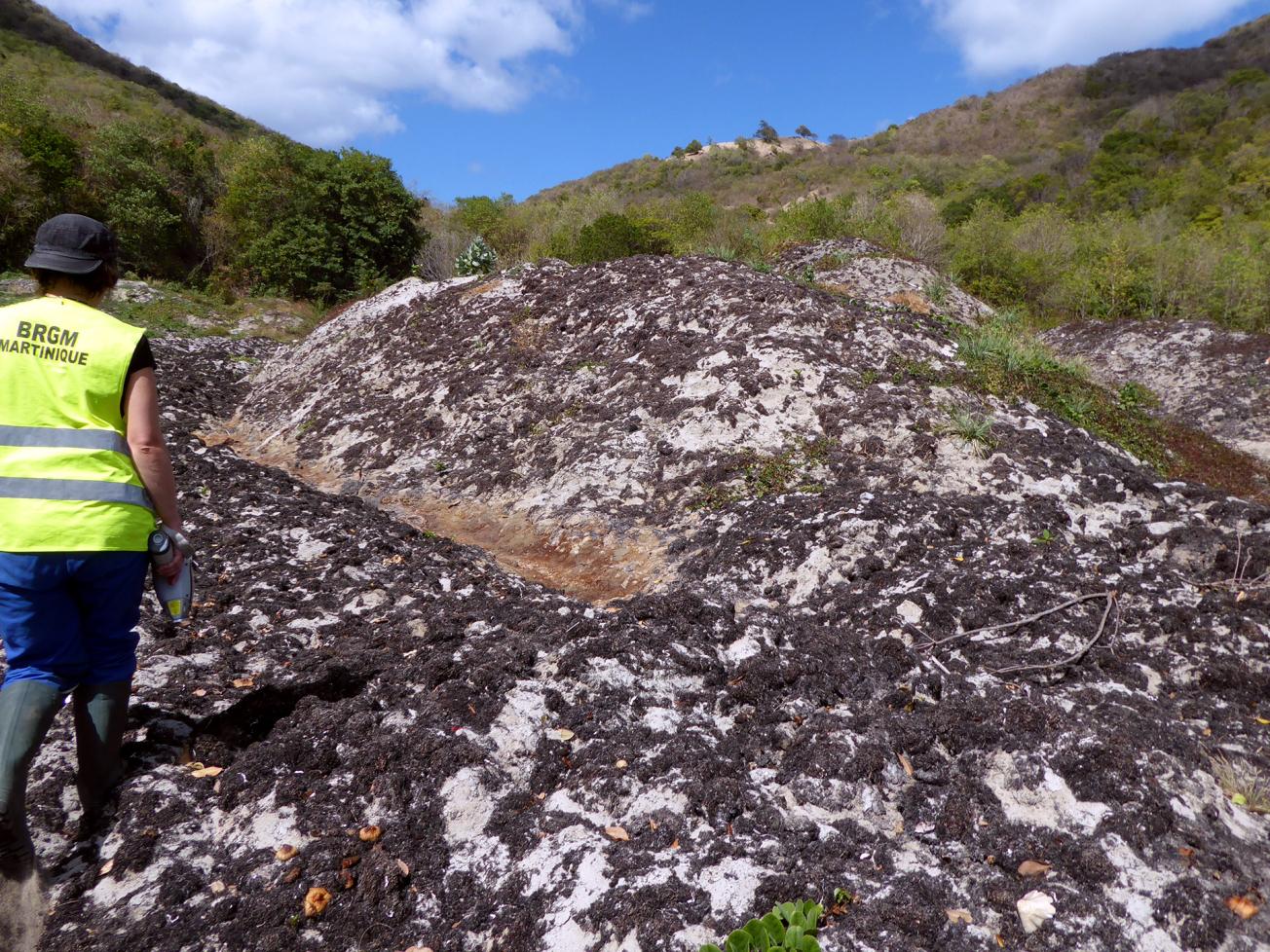
Sargassum seaweed at the Diamant storage site (2019).
© BRGM - Laureen Nacimento
The need
Because the masses of Sargassum washing up can lead to serious environmental (asphyxiation of marine fauna and flora), economic or health (toxic fumes) consequences, they cannot be left in place and have to be stored safely. This led the DEAL and BRGM to conduct a study to characterise the environmental issues associated with the eight Sargassum storage sites in Martinique, propose a ranking of these sites with regard to the issues at stake, and then make recommendations on storage conditions and/or monitoring, as well as on remediation in the event of proven environmental contamination.
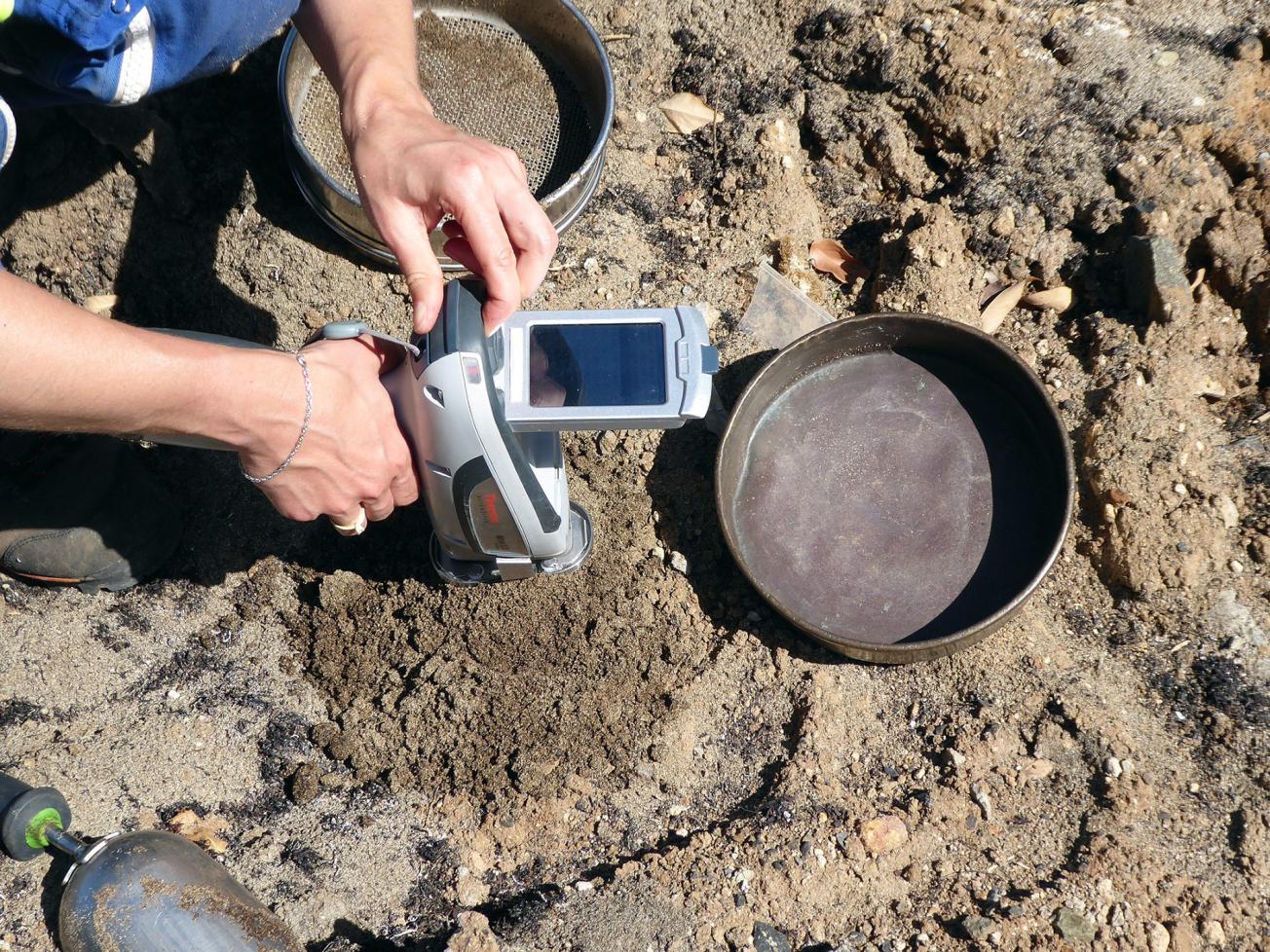
In situ measurements of arsenic levels using an X-ray fluorescence spectrometer (Sainte-Marie, 2019).
© BRGM - Laureen Nacimento
The results
BRGM therefore carried out a historical and documentary study, followed by investigations focusing on the soil at the eight storage sites (X-ray fluorescence measurements and laboratory analyses). Samples from the surrounding environment (sediment) were also collected at some sites and Sargassum seaweed and "leachates" were collected for exploratory purposes.
The soil data obtained were interpreted according to the principles of the 2017 management methodology for contaminated sites and soils. It showed that arsenic levels in soil samples taken at the surface (0-20 cm) under the Sargassum deposits did not exceed 15 to 20 mg/kg. Although these levels remain low, storage of Sargassum may have an impact on the soil, as the arsenic levels at the Sargassum storage sites were higher than those of the control samples (between 1 and 5 mg/kg). Chlordecone levels (soil and/or Sargassum) were also quantified for five of the eight sites in Martinique. These results show a need to improve storage conditions at the sites to avoid any deterioration in environmental quality.
The health and environmental issues at each of the storage sites were analysed using a conceptual diagram. It helped identify pollution sources and potentially polluting substances, the possible pollutant transfer vectors (leachate migration in soil, runoff to surface waters, etc.), as well as the targets (children, local residents) and possible routes of exposure (soil ingestion, etc.). A ranking of the eight storage sites was then proposed on this basis, with the Diamant and Robert sites being prioritised for the implementation of improvement measures.
Several recommendations were issued by BRGM, such as the implementation of traceability for Sargassum transport and storage, fencing around sites, construction of ditches or barriers, and recovery of Sargassum leachate in order to treat it. Lastly, as there were gaps in the data on groundwater at all the storage sites, BRGM recommended establishing a piezometric surveillance network and groundwater monitoring if the sites are to be made permanent.
Using the results
The recommendations issued by BRGM as part of this study will be used by the DEAL and the Prefecture of Martinique to improve Sargassum storage conditions, and therefore limit the potential environmental impacts.
The partners
- DEAL Martinique

